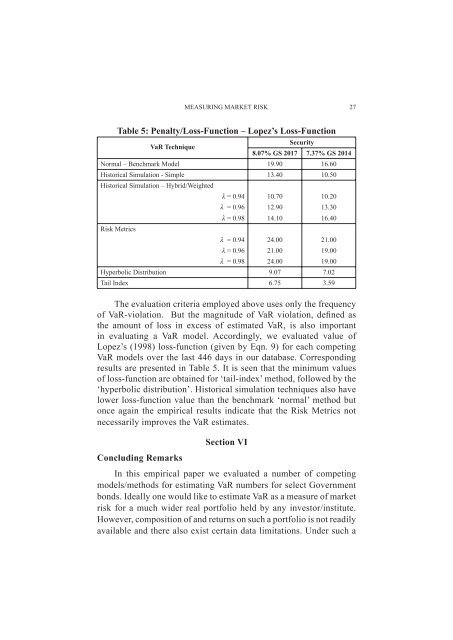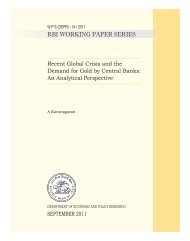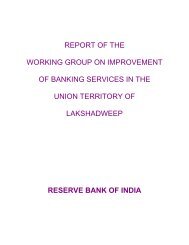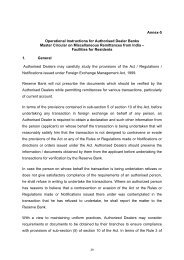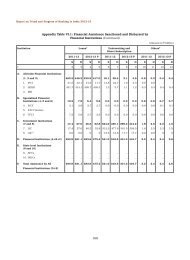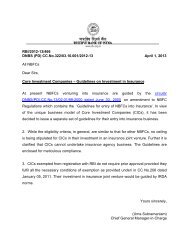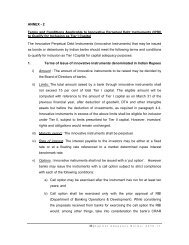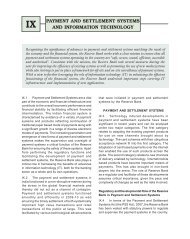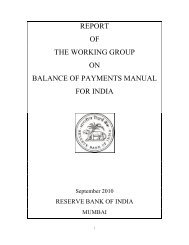Measuring Market Risk - Reserve Bank of India
Measuring Market Risk - Reserve Bank of India
Measuring Market Risk - Reserve Bank of India
Create successful ePaper yourself
Turn your PDF publications into a flip-book with our unique Google optimized e-Paper software.
MEASURING MARKET RISK 27<br />
Table 5: Penalty/Loss-Function – Lopez’s Loss-Function<br />
VaR Technique<br />
Security<br />
8.07% GS 2017 7.37% GS 2014<br />
Normal – Benchmark Model 19.90 16.60<br />
Historical Simulation - Simple 13.40 10.50<br />
Historical Simulation – Hybrid/Weighted<br />
λ = 0.94 10.70 10.20<br />
λ = 0.96 12.90 13.30<br />
λ = 0.98 14.10 16.40<br />
<strong>Risk</strong> Metrics<br />
λ = 0.94 24.00 21.00<br />
λ = 0.96 21.00 19.00<br />
λ = 0.98 24.00 19.00<br />
Hyperbolic Distribution 9.07 7.02<br />
Tail Index 6.75 3.59<br />
The evaluation criteria employed above uses only the frequency<br />
<strong>of</strong> VaR-violation. But the magnitude <strong>of</strong> VaR violation, defined as<br />
the amount <strong>of</strong> loss in excess <strong>of</strong> estimated VaR, is also important<br />
in evaluating a VaR model. Accordingly, we evaluated value <strong>of</strong><br />
Lopez’s (1998) loss-function (given by Eqn. 9) for each competing<br />
VaR models over the last 446 days in our database. Corresponding<br />
results are presented in Table 5. It is seen that the minimum values<br />
<strong>of</strong> loss-function are obtained for ‘tail-index’ method, followed by the<br />
‘hyperbolic distribution’. Historical simulation techniques also have<br />
lower loss-function value than the benchmark ‘normal’ method but<br />
once again the empirical results indicate that the <strong>Risk</strong> Metrics not<br />
necessarily improves the VaR estimates.<br />
Section VI<br />
Concluding Remarks<br />
In this empirical paper we evaluated a number <strong>of</strong> competing<br />
models/methods for estimating VaR numbers for select Government<br />
bonds. Ideally one would like to estimate VaR as a measure <strong>of</strong> market<br />
risk for a much wider real portfolio held by any investor/institute.<br />
However, composition <strong>of</strong> and returns on such a portfolio is not readily<br />
available and there also exist certain data limitations. Under such a


